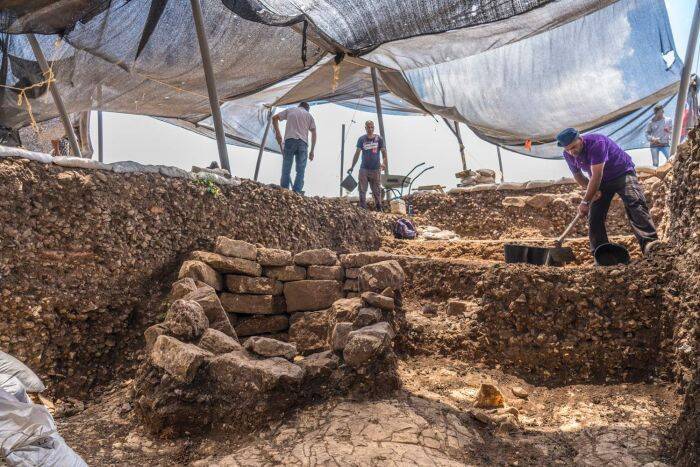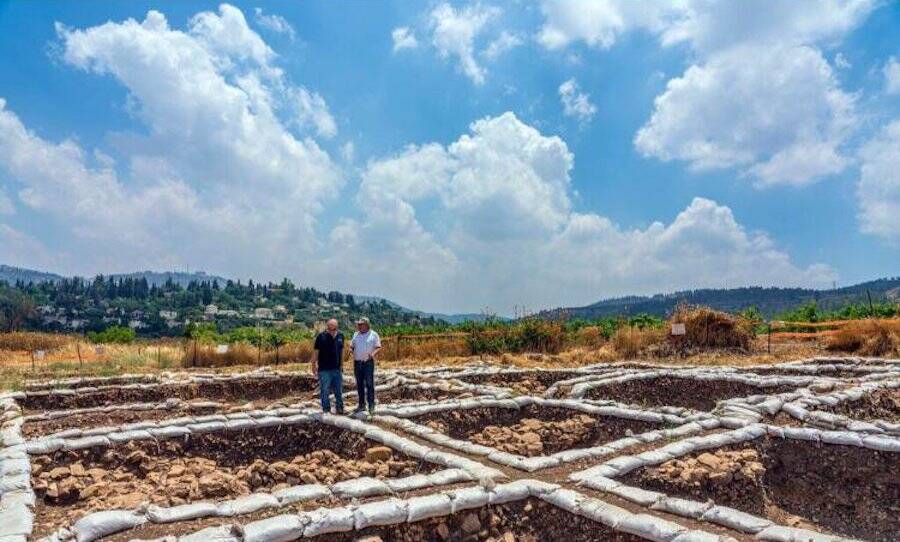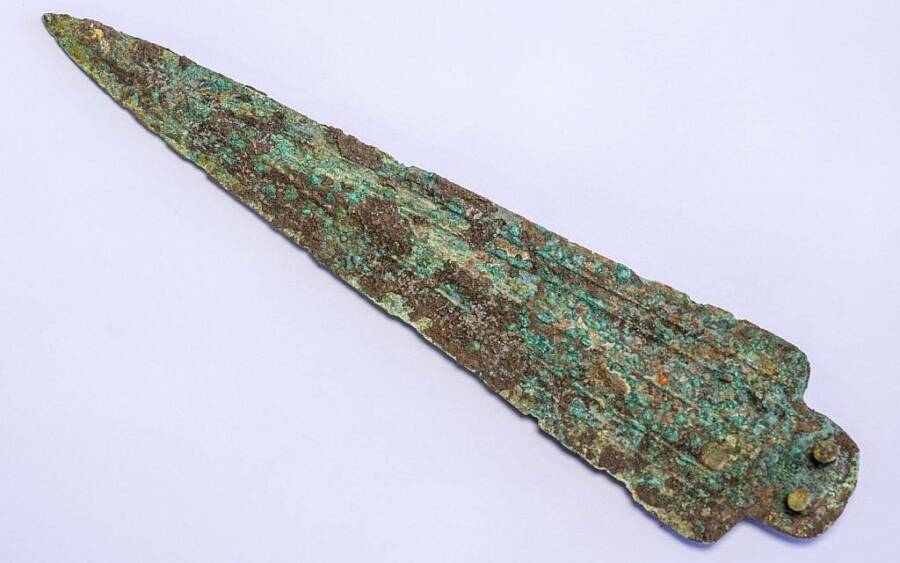The wealth of material recovered from the site is so stunning that archaeologists believe this discovery will allow research to advance by "leaps and bounds."

Eyal Marco, Israel Antiquities AuthorityThe excavation uncovered large buildings, alleyways, burial plots, and countless artifacts like arrowheads and beads.
An excavation project archaeologists are calling “a game changer” in Motza near the city of Jerusalem, has revealed an expansive 9,000-year-old settlement. According to the Australian Broadcasting Corporation, the site was saved when builders surveyed it before their planned construction of a highway.
The Neolithic settlement predates Britain’s Stonehenge monument, during which time “more and more” human populations transitioned from continuous migration to more permanent communities.
Co-director of the Motza excavations, Jacob Vardi, claimed the knowledge gathered from this discovery gives archaeologists their “Big Bang” moment regarding this particular stage of human history.
“It’s a game changer, a site that will drastically shift what we know about the Neolithic era,” said Vardi.

Yaniv Berman, Israel Antiquities AuthorityThe Israel Antiquities Authority asked to survey the area before a highway was built atop, which is when this priceless settlement was discovered.
The research team estimated a population between 2,000 and 3,000 people once lived in the settlement — “an order of magnitude that parallels a present-day city,” the team said.
Spanning dozens of acres, the town sits about three miles northwest of the center of Jerusalem. According to The Times Of Israel, most experts thought the area was uninhabited during this particular prehistoric period — until just recently.
“So far, it was believed that the Judea area was empty, and that sites of that size existed only on the other bank of the Jordan river, or in the Northern Levant,” a joint statement by Vardi and archaeologist Hamoudi Khalaily read.
“Instead of an uninhabited area from that period, we have found a complex site, where varied economic means of subsistence existed, and all this only several dozens of centimeters below the surface.”

Yaniv Berman, Israel Antiquities AuthorityDr. Hamoudi Khalaily (left) and Dr. Jacob Vardi (right) at the Motza site. The team plans on publishing several papers on the discovery for the public, and installing some of the artifacts in museums.
For Lauren Davis, an archaeologist with the Israel Antiquities Authority, the site is a wealth of contextual data — and one that will reap priceless rewards yet unknown.
“This is most probably the largest excavation of this time period in the Middle East, which will allow the research to advance leaps and bounds ahead of where we are today, just by the amount of material that we are able to save and preserve from this site,” she said.
In terms of the actual remnants and excavated artifacts produced by the dig, the team exposed sizable buildings, alleys, burial plots, and evidence of fairly sophisticated urban planning. The team also found storage sheds that held miraculously well-preserved lentil seeds and legumes.
“This finding is evidence of an intensive practice of agriculture,” the Israel Antiquities Authority said.

Israel Antiquities AuthorityThousands of these arrowheads, as well as a collection of flint tools, axes, sickle blades, and knives were discovered at the site.
Thousands of arrowheads, a collection of flint tools, axes, sickle blades, and knives were discovered at Motza, as well. Alongside evidence of domesticated animals, the uncovered artifacts indicated a people in transition — teetering between hunter-gatherer and agricultural lifestyles.
“Animal bones found on the site show that the settlement’s residents became increasingly specialized in sheep-keeping, while the use of hunting for survival gradually decreased,” the organization said.
The ancient people of Motza also kept domesticated goats, which researchers theorized were traded with people in Turkey, Jordan, and around the Red Sea. Signs of cow and pig farming were found, too, while the animal remains showed these people hunted gazelle, deer, wolves, and foxes.
The unexpectedly large buildings uncovered in this dig included areas for rituals, with some even containing plaster floors. The alleyways between structures denoted an advanced level of city design for the time, which was another welcome surprise for the excavation team.

Clara Amit, Israel Antiquities AuthorityA 9,000-year-old figurine in the shape of an ox was recovered at Motza, among countless other evidence of a domesticated culture.
As might be expected in the discovery of an ancient community’s settlement, evidence of human burials — replete with offerings postulated to accompany the dead into the afterlife — were found, as well. Some of these goods, like obsidian beads, came from Turkey, while others, like some seashells, came from the Red Sea many miles away.
“Based on the data that we have and from the fauna, we have a pretty good notion that the people at the site were farmers and they were specialists in what they did,” said Vardi, adding that it was clear why this area was so desirable.
The Motza site — which is about 30 to 40 hectares big, or one tenth of a square mile — is near a large spring of freshwater, with a few smaller ones scattered about nearby.
As it stands, the excavation project is far from finished. The team plans on publishing numerous research papers and articles for the public on its website, while some of the priceless artifacts are installed in yet-to-be identified museums.
After learning about the 9,000-year-old Neolithic settlement being uncovered in Jerusalem, read about how archaeologists in Egypt believe they’ve finally discovered how the pyramids were built. Then, learn about the 14,000-year-old Canadian settlement that might require revising the history of North America.




